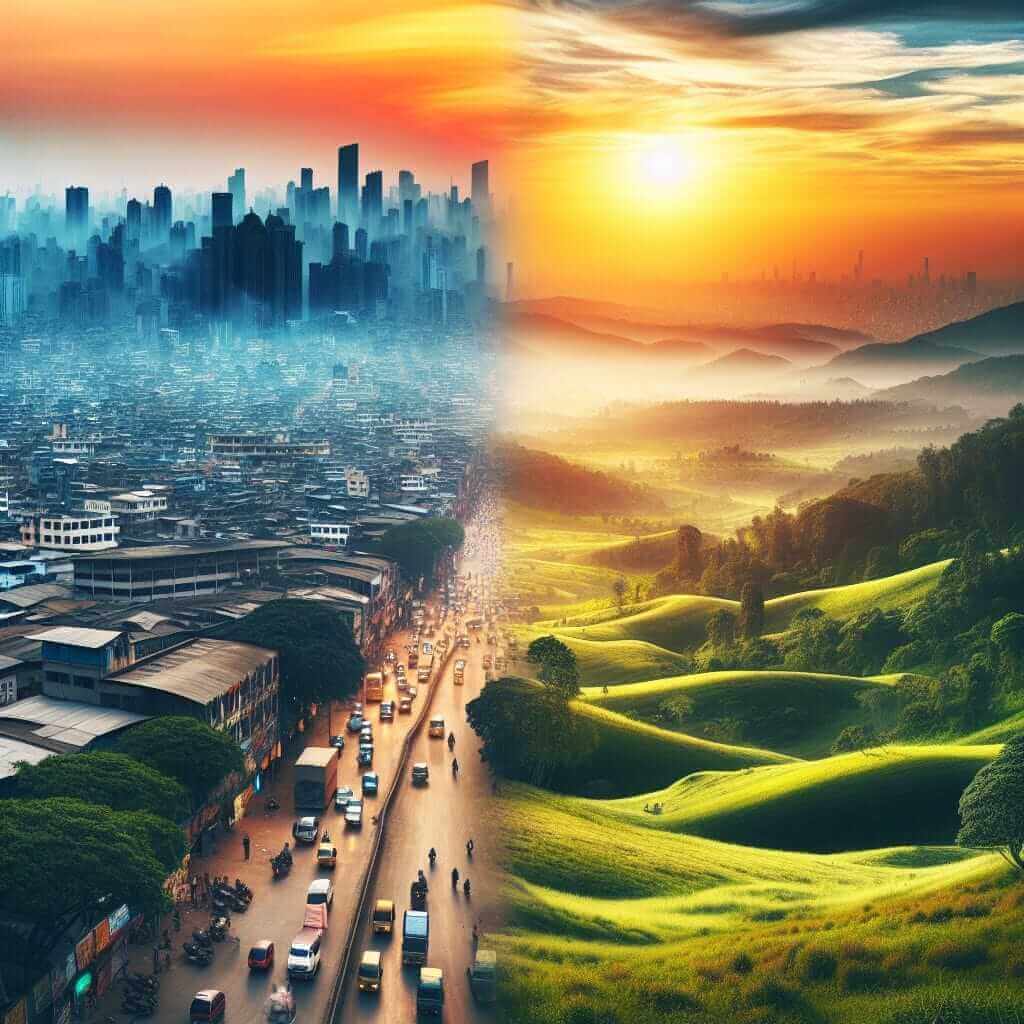In the IELTS Reading section, candidates are presented with various topics ranging from science and technology to environment and sociology. One recurring theme in past exams has been environmental issues, such as “How does urban sprawl affect air quality?” Understanding this topic not only prepares you for potential examination questions but also broadens your knowledge about real-life environmental concerns.
Urban sprawl refers to the uncontrolled expansion of urban areas into the surrounding rural land. This phenomenon has become increasingly common as cities grow and require more space for housing, businesses, and roads. Due to its relevance, it’s a plausible topic that could appear in future IELTS exams.
The Passage
Reading Passage: The Impact of Urban Sprawl on Air Quality
Urban sprawl significantly affects air quality due to increased vehicle emissions, industrial activities, and deforestation. As cities expand, more people rely on automobiles for daily commuting, leading to higher emissions of pollutants such as carbon monoxide (CO), nitrogen oxides (NOx), and particulate matter (PM). Furthermore, new industrial zones often emerge in sprawling areas, contributing additional pollutants to the atmosphere.
Another crucial factor is the reduction of green spaces. Trees and plants act as natural air filters by absorbing CO2 and releasing oxygen. When these green areas are replaced by buildings and roads, the air’s natural cleansing mechanisms are diminished. This deforestation exacerbates the concentration of airborne pollutants.

The so-called “urban heat island” effect also plays a role. Dense urban areas tend to be warmer than their rural surroundings due to extensive concrete and asphalt surfaces, which absorb and radiate heat. Higher temperatures can speed up the chemical reactions that produce secondary pollutants like ground-level ozone, further degrading air quality.
Policies to mitigate these impacts include promoting public transportation, implementing stricter emissions regulations, and encouraging urban green spaces. Nevertheless, managing urban sprawl requires a comprehensive approach that balances developmental needs with environmental preservation.
Questions
Multiple Choice
-
What is one direct result of increased vehicle emissions due to urban sprawl?
- a) Higher levels of industrial activity
- b) Increased concentrations of carbon monoxide and nitrogen oxides
- c) Reduction in CO2 levels
- d) Improvement in air quality
-
How do green spaces benefit air quality in urban areas?
- a) By increasing industrial activities
- b) By acting as natural air filters
- c) By generating more vehicle emissions
- d) By trapping more heat
-
What phenomenon tends to make urban areas warmer than rural areas?
- a) Deforestation
- b) The urban heat island effect
- c) Stricter emissions regulations
- d) Public transportation
True/False/Not Given
-
Urban sprawl leads to the creation of more green spaces.
False -
The text suggests that urban heat islands can worsen air quality.
True -
Stricter emissions regulations are not mentioned as a way to improve air quality.
Not Given
Matching Information
Match the impacts of urban sprawl (A-D) with the descriptions (1-4).
Impacts:
- A) Reduced green spaces
- B) Increased vehicle emissions
- C) New industrial zones
- D) Higher urban temperatures
Descriptions:
- Lead to higher levels of pollutants in the atmosphere
- Act as natural air filters
- Intensify the urban heat island effect
- Contribute additional pollutants to the atmosphere
Answers:
- A – 2
- B – 1
- C – 4
- D – 3
Answer Keys
- b) Increased concentrations of carbon monoxide and nitrogen oxides
- b) By acting as natural air filters
- b) The urban heat island effect
True/False/Not Given
- False
- True
- Not Given
Matching Information
- A – 2
- B – 1
- C – 4
- D – 3
Common Mistakes
- Misinterpreting Key Words: Candidates often confuse phrases like “promoting public transportation” and “increasing vehicle emissions.” Practice careful reading to differentiate such phrases.
- Time Management: Some test-takers spend too much time on one question. Allocate time wisely and move on if you’re stuck.
Vocabulary
- Urban Sprawl (n): /ˈɜː.bən sprɔːl/ – The uncontrolled expansion of urban areas.
- Emissions (n): /ɪˈmɪʃ.ənz/ – Pollutants released into the air.
- Particulate Matter (n): /pɑːˈtɪk.jʊ.lət ˈmæt.ər/ – Tiny particles suspended in the air.
- Deforestation (n): /ˌdiː.fɒr.ɪˈsteɪ.ʃən/ – The clearing of trees/forests.
- Urban Heat Island (n): /ˈɜː.bən hiːt ˈaɪ.lənd/ – Urban area significantly warmer than its rural surroundings.
Grammar Focus
- Passive Voice: Often used in academic texts to emphasize the action over the subject. Example: “Green spaces are replaced by buildings.”
- Complex Sentences: Combining multiple clauses for detailed explanations. Example: “As cities expand, more people rely on automobiles for daily commuting, leading to higher emissions of pollutants.”
Advice for High Scores in Reading
- Active Reading: Engage with the text by summarizing paragraphs in the margin.
- Practice Tests: Regularly complete practice tests to familiarize yourself with question types and formats.
- Time Management: Develop a strategy to balance speed and accuracy.
By mastering these techniques and understanding the discussed topic, you can enhance your reading skills and perform better in the IELTS exam. Good luck!